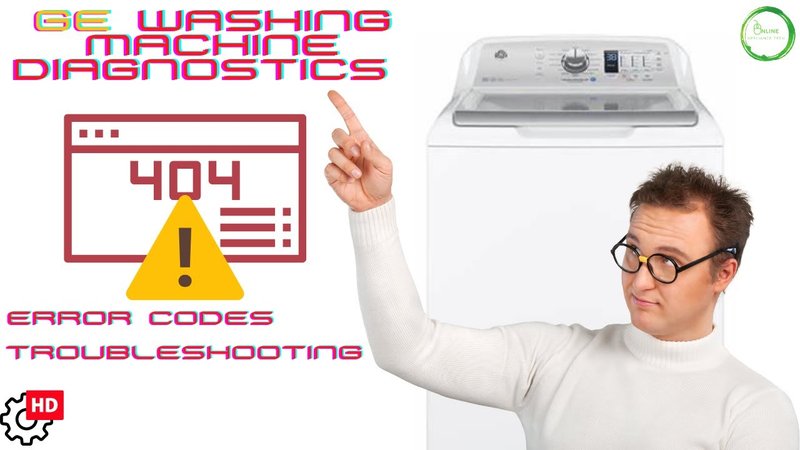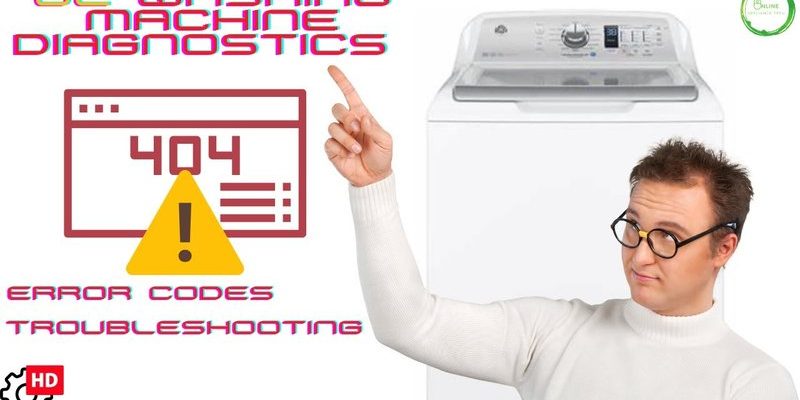
Errors like the F1 code are your washing machine’s way of telling you something’s not quite right. Think of it as when your car’s check engine light comes on. It might keep running for a while, but eventually, problems will bubble up if ignored. Not fixing the Error F1 on your GE washing machine can lead to bigger issues down the road. Let’s dive deeper into why this happens and what it means for your laundry routine.
Understanding Error F1 in GE Washing Machines
So, what’s the story with Error F1? This code typically signals a problem with the washing machine’s control board – the brain of your washer. Imagine the control board as the computer processor in your laptop. Just as a glitchy processor can make your laptop misbehave, an issue with the control board can make your washing machine act up. It might start by not completing cycles, giving inconsistent washes, or not starting at all.
The Error F1 can also be likened to a warning bell. It’s alerting you to a potential malfunction that needs attention. Ignoring it can lead to more than just inconvenience. Over time, wear and tear could worsen, turning a minor fixable issue into something major and costly. It’s a bit like ignoring a tiny leak under your sink – do that for long enough, and you might end up with a flooded kitchen floor.
Here’s what happens if you don’t address this error: The control board may continue to degrade, leading to further errors or total machine breakdown. It’s essentially your washing machine’s last-ditch attempt to ask for help before things go south. Therefore, if you see this error, it’s wise to take action sooner rather than later.
Common Causes of Error F1
You might be wondering, what causes this error in the first place? Great question! Often, Error F1 stems from power surges or electrical issues. Picture a sudden spike in your home’s electricity as a wave crashing onto the shore. If your machine’s control board isn’t ready for it, things can get a little hectic. That electrical surge can scramble the board’s communication, leading to the F1 error.
Another possible cause could be moisture or debris affecting the internal components. Imagine trying to run in a rainstorm with your shoes filled with water – not exactly smooth sailing, right? Similarly, moisture inside your machine can cause havoc with electrical connections, prompting the error to appear.
Sometimes, the issue is simply wear and tear. Parts age, connections may loosen, and over time, your machine’s components may not communicate well, leading to the F1 error. This natural wear and tear are inevitable, but addressing issues early can extend your machine’s lifespan significantly.
Consequences of Ignoring Error F1
Ignoring Error F1 can lead to a cascade of issues. Initially, you might only notice slight inconveniences, like clothes not washing thoroughly or cycles that stop mid-way. Over time, these small inconveniences can develop into larger, more frustrating problems, such as the machine refusing to start or stopping unexpectedly during critical stages of the wash cycle.
Beyond frustration at missed laundry days, ignoring this error can hit your wallet. An unchecked F1 error could result in further damage that requires extensive repair or even replacement. It’s similar to ignoring a toothache – wait too long, and you might face root canals or tooth extraction instead of a simple filling.
Moreover, a faulty washing machine can lead to increased utility bills. A malfunctioning control board may cause the machine to use more water or electricity, pushing your monthly bills higher. Addressing the error early can prevent this inefficiency and help maintain a budget-friendly home.
Steps to Fix Error F1
Now, let’s talk solutions because nobody likes to be left hanging. If you’re facing an F1 error, a good starting point is to reset the machine. Just like restarting a stubborn smartphone can sometimes solve issues, so can unplugging your washing machine for a few minutes before plugging it back in.
For those comfortable with a bit of DIY, checking for visible signs of moisture or debris around the control panel can help. Ensure the machine is turned off and unplugged before you begin. Carefully clean away any visible dirt and ensure the area is dry, then try running the machine again.
If these steps don’t work, it might be time to call in a professional. A certified technician can assess the situation and determine if the control board needs repairing or replacing. While it might seem daunting, catching and fixing these issues early can save you a headache and extra cost down the road.
Preventative Tips for Long-term Health of Your Washing Machine
Maintaining your GE washing machine to prevent future Error F1s is not too different from taking care of a car or even your own health. Regular check-ups, careful usage, and prompt attention to small issues can save you from major headaches later.
First, try to protect your washing machine from power surges. You might consider using a surge protector – similar to wearing rain boots in a storm, it helps keep the water at bay. Also, keep an eye on moisture levels. Ensuring your laundry area is well-ventilated can prevent excessive moisture buildup that might affect the machine’s electronics.
Finally, schedule regular maintenance checks. This doesn’t have to be frequent or costly. Even a yearly check from a professional can catch potential issues before they become serious, ensuring your washing machine runs smoothly for years. After all, a little preventive care can go a long way in avoiding that pesky Error F1 from ever popping up again.
